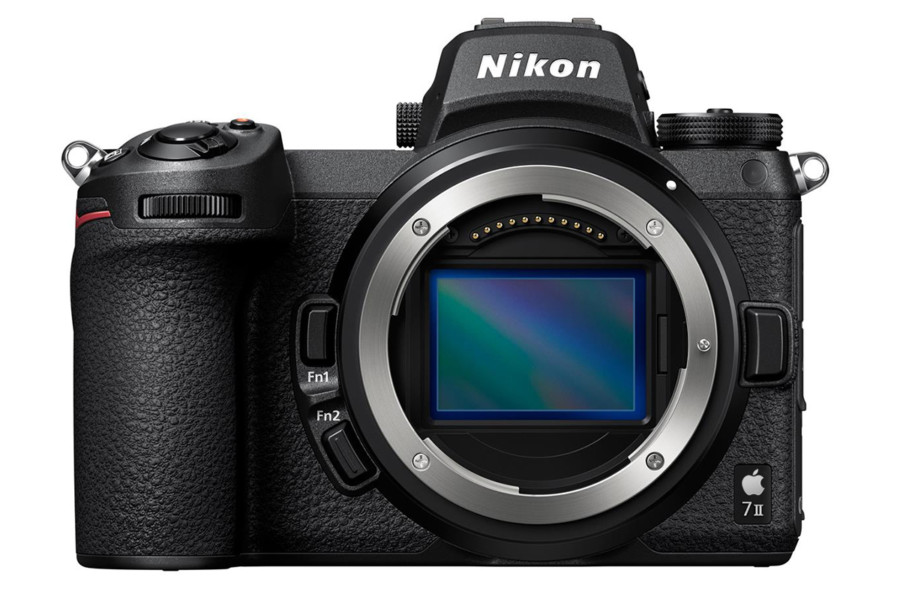Share
What If Apple Bought Nikon?
It’s a transaction that makes zero financial sense for Apple, but the possibilities of this thought experiment would be dreamy. After years of re...

It’s a transaction that makes zero financial sense for Apple, but the possibilities of this thought experiment would be dreamy.
After years of revenue decline and a corresponding drop in its stock price, Nikon is reportedly in “dire straits” as a result of a COVID-19-related slump in camera sales that affected the entire industry. Much has been written about the stubbornly slow rollout of their ILP-based Z system, bizarre product launches like their Df camera, and complete failures like their DL compact series. And of course, all those factors pale in comparison to the rise of the smartphone.
Despite a continuously shrinking market since 2013, consumers still purchased about 8 million digital still cameras with an interchangeable lens in 2019 (by contrast, Apple sold some 185 million iPhones during the same period), and I optimistically believe that the post-COVID world will generate a rise in travel and consumerism that will boost camera sales. The vast majority of smartphones users will never purchase a dedicated camera, but smartphones are still a gateway for others.
In the past decade, the Big Three (Sony, Canon, and Nikon) have innovated with the mirrorless technology, autofocus tracking, and sensor resolution, but they’ve mostly shunned the computational/programmable approach taken by the smartphone manufacturers. The Zeiss ZX1 uses a modified Android operating system, but it’s secret weapon is apparently Adobe Lightroom packaged in an expensive, fixed-lens paperweight of a camera.
With inherent size constraints, smartphone manufacturers continue to push the limits of technology with folded lens optics connected to tiny sensors – relying on software to stack their way to better image quality. Consumer desire for different focal lengths or creative choices has given way to a cottage industry of third party clip on lenses, but at the end of the day, it’s hard to beat dedicated optics and a larger sensor housed in an ergonomic package.
Which brings us back to Nikon. Nikon is a comparatively small company compared to Sony and Canon, and its market share has declined into the teens (by contrast, Canon owns 48% of the market share). It’s highly unlikely that any combination of new features – from 8K video to more megapixels – would dramatically alter their tenuous position. Like any technology company struggling to stay afloat, the choice is to pivot or die an ignominious death.
Simultaneously, after a decade of designing their own A-series chips for iPhone and iPad, Apple released its much heralded M1 chip – a blazingly fast ARM-based system-on-a-chip (SoC) that some analysts believe can be produced at 1/5th of the cost of the Intel chips used in previous generation Macs. Photo industry SoC’s like Expeed and Bionz simply can’t compare to the Apple’s engineering resources, supply chain expertise, and unit cost.
So imagine a Nikon camera with a Z-mount built on iOS powered by Apple Silicon. Throw on a LiDAR sensor. Autofocus algorithms like face tracking could be easily replaced with third party variants. Computational capabilities like HDR, noise reduction, and image stabilization could make a Nikon/Apple camera unique in the photo ecosystem. Airdrop could provide a near-immediate back-up of images. The iPhone could seamlessly act as a hotspot to eliminate the need for the camera to double as a phone. An app ecosystem could easily build in functionality like “Holy Grail” intervalometers, astrophotography guides, remote photography and more. The UI would adopt an iOS or MacOS design language – ridding us of an arcane 20-year old menu system. The availability of a USB-C port and software programmability could give rise to a whole ecosystem of interesting add-ons. I think it’s a camera that a lot of people would be excited about.
Plus, it’s a defensible market position. Apple’s closed ecosystem has shielded it from the self-inflicted pains of planet Android. So it would be much harder for Sony and Canon to follow suit in such a bold way. In the meantime, Canon has filed a patent for an Osmo-style gimbal with interchangeable lenses that is reminiscent of Sony’s QX-100. Canon and Sony are in a better position to innovate.
Apple currently holds nearly $200 billion in cash. Nikon’s market cap is around $2.25 billion, so the acquisition would be a drop in the bucket. That said, the deal makes zero sense for Apple – a company that’s interested in emerging technologies like AI or features with broad consumer appeal (e.g. DarkSky). Apple has almost nothing to gain by an acquisition, but a partnership or joint venture might allow it to test a third party market for Apple Silicon. After all, if Apple Silicon is better and cheaper than Intel for the next decade, then imagine Amazon EC2 clusters filled with their chips. It’s a potentially huge revenue opportunity.
If 2021 is destined to be a year of great economic recovery and resurgence of human spirit, then let a guy dream! As a photography lover and long-time Nikon user, I can’t think of a more exciting roadmap for the beleaguered camera manufacturer. An acquisition might be pure fantasy, but it makes more sense right now than it probably ever will.


